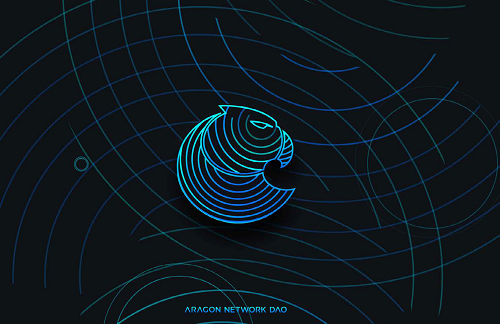Comment by Héctor Shibata, director of investments & portfolio at ACV – a global corporate venture capital (CVC) fund – and adjunct professor for entrepreneurial finance; and Gonzalo Soriano, a VC investor at ACV
2021 was a year where investment in VC grew very fast. Just to give context, global investment in startups had never exceeded $100bn on a quarterly basis before this year, which has happened in the first three quarters of the year. This growth was not only driven by the number of deals, but also by the increase in capital raised. During the first three quarters of the year, the number of rounds of $100m-plus doubled compared with last year, and the figure of new decacorns (companies valued at $10bn-plus) also increased by 100%, with 30 new ones as of November 2021 compared with 15 in all of 2020.
The current conjuncture in the VC capital raising shows an accelerated interest of different actors of the global investment ecosystem towards having exposure to the financial returns generated by disruptive technologies.
In our article from last year, What’s Next: Trends in Innovation and Technology for 2021, we defined 11 technological trends applied to different verticals and industries that were going to lead the innovation and entrepreneurship ecosystem through the creation of startups and the raising of VC capital for this year.
Reflecting on the past 12 months and based on the global VC activity, we identified five of these predictions that were key in the development of the VC industry.
Embedded AI
Artificial intelligence is becoming increasingly relevant at the business level, more companies are looking to integrate learning and automation models within their processes. The evolution of this technology in its development and ease of implementation opens the possibility that any company, regardless of its size and business model, can be an AI-based company. In addition, AI has the potential to be integrated into any technological infrastructure regardless of its level of maturity, such is the case of blockchain, computer vision and AR / VR.
Some interesting use cases developing in this space are; Hallah, which provides recommendation personalisation capabilities to retailers in the digital world; Peekage, who through their algorithm create an “honesty score” so that brands can carry out more targeted sampling campaigns; or Torch, which is a digital carrier optimising routes through AI.
Branded content and social commerce
Mainly driven by the growth of platforms born in Asia in recent years, such as Pinduoduo or Meesho; and accompanied by the intersection between e-commerce and social networks, 2021 saw a boom in solutions related to social commerce. Social commerce became a logical evolution to e-commerce given the ease that nowadays any brand has to sell through these channels, and it was even more accelerated by the pandemic. It is estimated that the social commerce space will exceed $7bn in capital raising by the end of 2021, a significant increase compared to the $3bn raised in 2020.

Within this vertical there are different business models, but all with the common factor of leveraging the power of the community to enable more online transactions. Among the most popular models are group buying, chat commerce, livestream e-commerce, influencer marketing & gamification. The geography where these business models have been most sought to migrate is Latin America, some startups doing this in the region are Favo, Facily, Apperto, Elenas, Nilus, Dolado and Mimo.
Micro-fulfilment centres (MFC) and hyper-localisation
The pandemic undoubtedly accelerated the adoption of e-commerce at a global level, and as a result of this, business models were born focused on minimising waiting time for consumers, optimising last-mile logistics costs, and maximising the consumer experience. This is how the need to have MFCs or dark stores was born, points of sale located in high-density areas of large cities solely dedicated to meeting the demand of digital consumers.
The first half of 2021 saw a great disruption in this sector, which was initially dominated by the food sector, achieving amounts of VC investment little seen in the industry. The main business models in this space were: digital retailers supported by MFCs, such as JOKR, Gorillas, Fridge No More and Flink; and those who outsource or seek support in the operation of MFCs. The latter is divided into companies that only rent storage space, such as Wareclouds in Chile; those that outsource the entire logistics operation from end to end, such as Cargamos in Mexico, Estoca in Brazil or Flowspace in the US; those that integrate each part of the logistics chain with different software companies through APIs, such as Instance in Chile or Fulljaus in Argentina; and those who support the search for physical space and operation of MFCs such as Clicoh in Argentina.
Blockchain & NFTs
The evolution of blockchain technology continued its accelerated growth, with 2021 being a year with important milestones, such as Coinbase’s IPO in April through a direct listing, valuing the cryptocurrency exchange at $65bn at the time of its exit. Also, the Mexican platform for the purchase and sale of crypto assets Bitso raised a Series C of $250mm at a post-money valuation of $2.2bn, and its Brazilian counterpart, Mercado Bitcoin raised $200m in its Series B at a valuation of $1.9bn pre-money.
As a result of this, a “bull run” of the cryptocurrency market was seen, in which Bitcoin managed to reach a market capitalisation of $1tn. Similarly, the decentralised platform Ethereum had exponential growth, with ETH being one of the highest performing crypto assets, driven mainly by its application of use cases such as decentralised finance (DeFi) and non-fungible tokens (NFTs).

Within the NFT’s ecosystem there was an increase in interest from global VC funds. Among the most relevant investment rounds are the $900m Series B from FTX or the $100m Series B from the NFT’s marketplace OpenSea led by a16z, which reached a valuation of $1.5bn. In the collectibles space, the CryptoPunks collection that has transacted ETH 726.8k ($2.9bn) can be highlighted, or that of Bored Ape Yacht Club, which has generated a transactional volume of ETH 241k ($984m) among its 10,000 pieces. Many world-renowned multinational companies, organisations and individuals have interacted with this initiative; as was Visa with the acquisition of an NFT of CryptoPunks for $150k, the NBA launching its marketplace of digital collectibles “Top Shot”, and even Lionel Messi launching a collection of NFTs, with one of them selling for more than $1m.
Cybersecurity
The accelerated digitisation that has resulted from the pandemic has brought the need for greater cybersecurity in companies and even on a personal level. Let us remember the ransomware attacks that have happened this year like the Colonial Pipeline in the summer where they paid 75 Bitcoins (approximately $4bn) to release the assets. The computer equipment producer Acer also suffered an attack from the REvil hacker group who demanded $50m.
As a result of all this there is a wave of cybersecurity companies trying to seize the market opportunity. In addition, during the year the SentinelOne IPO was carried out at an implicit valuation of $9bn.
2022 will undoubtedly be the continuation of the digital age. In addition to continuing to face covid-19, society will continue to face global inflation, disruptions in the supply chain, and financial uncertainty.
The main trends for 2022 will be the following:
1. Connectivity: Connected sensor data, machines and powerful analytics at the edge will lead us to a completely measured world. IoT and 5G technologies will become the deal breakers that will drive transformations in every single industry. The combination of these technologies will boost innovation and the speed of connections, creating new services, business models and next generation customer experiences. (McKinsey)
Derived from connectivity, the global analytics market is estimated to reach $133bn by 2026 (CAGR of 29%). Global analytics and big data revenue will reach $275bn in 2022, according to Market Research Future Report.
Some of the startups supporting this connectivity gap are FloLive in the UK, Databricks and Fivetran in California.
2. Cybersecurity mesh: Cybersecurity mesh enables scalable, flexible and reliable cyber control across cloud and non-cloud environments to secure data anywhere, approaching a centralised policy that reduces security breaches and keeps up with data protection legislation. (Gartner)
Today, companies are developing more robust cybersecurity architectures using even technologies such as blockchain, which could become a relevant percentage of the global economy in the coming years. Cybersecurity, privacy and security startups have raised $10.7bn so far this year, six times more than was raised throughout 2010 ($1.7bn). (Crunchbase)
Some startups developing in this space are Axis Security in California, DefenseStorm in Georgia and Ethyca in New York.
3. Future of programming: Machine learning and AI tools will revolutionise coding creating a new age of software: Software 2.0. It will create new ways of coding and reduce its complexity and working time for software development and analytics; especially given that the lack of programming knowledge will cease to be a barrier sooner than later. In order to do so, companies need to master DataOps and MLOps practices and technology along the way. (McKinsey)
Spending on artificial intelligence solutions in 2021 will reach $342bn and $500bn by 2024. Another trend within programming solutions are no-code and low-code platforms, which allow developers and non-developers to write code seamlessly through visual and interactive dashboards with drag-and-drop interfaces. If the current trend holds, the market for low- and no-code could climb from between $13.3bn and $17.7bn in 2021 to between $58.8bn and $125bn in 2027.
Some startups developing this technology are Netlify in California, Unqork in New York and Pipefy in California.
4. Data Fabric: Data fabric makes data available anywhere. It integrates data across multiple platforms and business users; thus, it is essential for modernising data management and integration, and connecting processes. There are opportunity areas regarding its use cases and its improvements to reduce data management efforts. Data fabric deployments will quadruple efficiency in data utilisation by 2024. This will reduce 50% of human-driven data management tasks. (Gartner)
Some startups working in this area are: K2View and Magnitude Software in Texas, and Eyeota in Singapore.
5. Cloud computing: Cloud sovereignty and edge computing needs have become a contemporary challenge for CTOs. Cloud adaption has disrupted IT organisations, governance and operating models (FinOps, CloudOps) and by next year, 70% of business will go fully or hybrid cloud. IT infrastructure and services are experiencing some serious disruption, reducing the needs for IT setup and maintenance, bringing computing capacities closer to users and resources for real-time processing and most important, decentralising the cloud infrastructure. (Bearing Point)
The total value of the cloud computing market is of $371.4bn in 2021 with a CAGR of 17.5%. By 2025, the market value is expected to be $832.1bn. (Markets and Markets)
Within this space, some relevant startups are Rescale in California, Surpath in Shanghai and Backbox in Israel.
6. Hyperautomation 2.0: Hyperautomation is “a disciplined, business-driven approach to rapidly identify, vet and automate as many business and IT processes as possible”. Hyperautomation 2.0 enables scalability, remote operation and business model disruption; with it, processes are faster and allows workers to focus on more important tasks; playing an important role for Industry 4.0. (Gartner)
Hyper-automation will be driven primarily by technologies that help organisations map and optimise workflows and orchestrate the functions of their work teams in a simple way. The most important technologies to achieve this are robotic process automation (RPA), low-code and no-code platforms, and AI-based virtual assistants. Gartner estimates that the hyper-automation market will reach $600bn by 2022.
Some startups developing in this area are Cyclone Robotics in Shanghai, Swish.ai in Israel and Rele.ai in Switzerland.
7. Healthtech: The health sector and its intersection with technology have opened a wide range of opportunities for innovation. Some of the most important applications within this sector are digital health, medical devices, biopharmaceuticals, digital therapeutics, health IT, mental health and wellness, and telehealth. The capital raised by startups in this sector is also increasing, during the first three quarters of last year VC investment in healthtech reached $97bn, an increase of 20% compared with the total investment that the sector had in 2020.
Some startups with important transactions in this sector are AboGen Biosciences in China ($700m Series C), Laronde in Massachusetts ($400m Series B) and Cityblock Health in New York ($400m Series D).
8. Circular economy and sustainability: The circular economy is growing due to climate change. It will take on more and more relevance in the decisions of companies and governments. Some of the trends in this sector are the following: waste-to-resource, reuse, internet of waste, AI-powered recycling, bio-based materials, remanufacture, blockchain and repair.
Some startups with recent transactions in this sector are Refurbed in Austria ($54m Series B), FixFirst and Concular in Germany. Other relevant companies include Algramo, Nilus, BioBox, ThredUp, Rent the Runway.
9. Web 3.0 and DAO: Technological evolution and the convergence of multiple technologies such as blockchain, AI, ML, IoT, among others, is resulting in the formation of Web 3.0 and Decentralised Autonomous Organisations (DAO).
Web 3.0 is the next stage of the web evolution that would make the internet more intelligent or process information with near-human-like intelligence through the power of AI systems that could run smart programs to assist users.
A DAO is a mechanism that enables online communities to form and coordinate economically. It is a new kind of digital and economic entity that runs as code and is owned and controlled by its members. It makes possible for any community or organisation to deploy capital through a set of rules enforced by an underlying blockchain.

Today DAOs with different use cases are already being developed, among the most relevant are the protocol DAOs, social DAOs, investment DAOs, grant DAOs, service DAOs, media DAOs, creator DAOs, and collector DAOs. Some existing DAOs, or platforms that seek to facilitate the creation of these are Aragon, MakerDAO, Friends with Benefits, The LAO, MetaCartel and RaidGuild.
10. Metaverse: The metaverse is an artificial space where the physical world meets the virtual world. In order to allow users to interact virtually, the metaverse concept combines virtual reality (VR) technology, augmented reality (AR), social media, online gaming and cryptocurrencies. It is widely known that Facebook is the current leader on the industry, but some Apac companies have also excelled; especially in marketing and medical use cases.
Crypto cloud economies are the next emerging market investment frontier and the Metaverse is at the forefront of this Web 3.0 internet evolution. The Metaverse is a set of interconnected, experiential, 3D virtual worlds where people located anywhere can socialise in real-time to form a persistent, user-owned, internet economy spanning the digital and physical world. Grayscale, one of the leading crypto asset managers, stated that the metaverse could be a $1tn business opportunity for the future.
The following year will be full of great challenges and opportunities for those who have the vision to capture them. Decentralisation and deep technologies are converging in a new era of the internet, out of which unknown business models and new technologies will arise. We are on the verge of the birth of the next wave of companies that will lead the market in the following decade. Market participant such and entrepreneurs, investors and existing companies must understand the dynamics and limitations of these technology trends to adapt their vision and business strategy to the new internet age to increase their competitiveness in the market.








